Human resource and training professionals seem to jump from fad to fad and are often guilty of burning through large sums of money reinventing the wheel with custom content. “It’s different here,” they truly believe. “We have a unique culture. We’re special!”
Yet, if there was ever a standard for new manager training it has to be the theory of situational leadership.
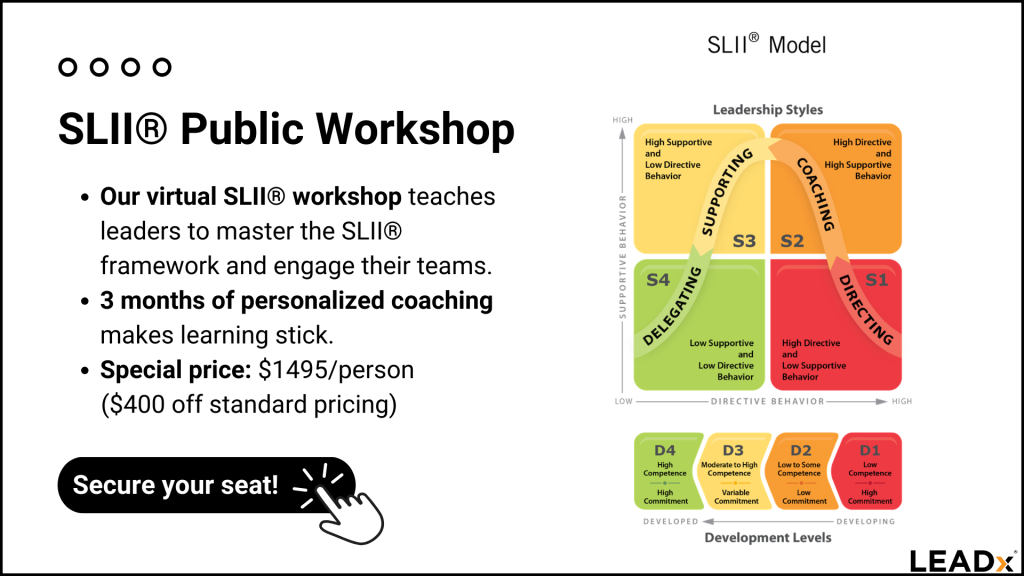
What Is Situational Leadership® Theory?
The idea behind situational leadership is that you, the leader, should change your leadership approach to be more or less directive, and more or less supportive, based on the situation.
And the situation means whether your direct report (i.e., team member) is a competent and committed superstar, or on the other end of the scale, an incompetent slacker.
For example, you’ve got a young newbie on your team with little experience. You would want to be very “directive”–show her how to do it, tell her to do it, make sure it’s done right. But for another team member who has ten more years of experience than you do, and has always performed well, you’d just delegate and get out of the way. They don’t need you looking over their shoulder and being all micro-managey. (No, that’s not a real word. But it’s funny.)
“So What? What’s So Great About That?”
So you’re not impressed with this model, huh?
That’s because today, it seems like common sense. But before there was the idea of situational leadership most people assumed there was One Right Way to Lead. You could argue about what the right way was—Autocratic, Laissez-Faire, Servant, Transformational—but it was just assumed you had a model and led everyone the same way.
But in the 1960s leadership wonks started coming up with a variety of “contingency theories.” Meaning the best leadership style would be contingent on things like organizational integrity, environmental factors, the type of tasks that needed to be completed, etc.
And in the sixties, there was a lot of research and competing theories even within the broad idea of contingent-leadership. So they put all the professors on an island and each week they voted the most annoying leadership geek off the island until there was a single winner.
OK, that never happened. I was just making sure you didn’t fall asleep. What really happened was…
Paul Hersey and Ken Blanchard: The Lennon and McCartney of Leadership
In the year that the Beatles would release Abbey Road, Dr. Paul Hersey and Dr. Ken Blanchard released Management of Organizational Behavior, a textbook that would turn them into rockstars of the leadership world. It’s a textbook that would be used in business courses for over forty years.
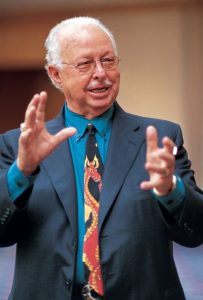
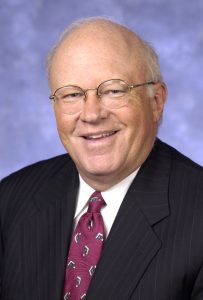
(What, they don’t look like rock stars to you?)
It was this textbook that laid out the original version of the model, and Hersey and Blanchard become partners in a management consulting and training company called The Center for Leadership Studies.
But remember what eventually happened to the Beatles?
Yep, the rockstars of leadership split up, too.
Two Different Versions? You Say Tomato, I Say Tomahto
In 1979, ten years after launching the theory of all theories, Blanchard left to start his own company, now known as The Ken Blanchard Companies. And he continued to refine the Situational Leadership® model and began to call it Situational Leadership® II.
To purists, there are important differences between the two models. For most HR professionals and managers, not so much.
More recently, the two companies sued each other over the right to use the “Situational Leadership®” name. It was agreed that after the year 2020, The Center for Leadership Studies would continue to use the Situational Leadership® name, while The Ken Blanchard Companies would have to refer to their model as just SLII®.
You can see some of the differences between the two versions in the visual model. Situational Leadership® offered by The Center for Leadership Studies looks like this:
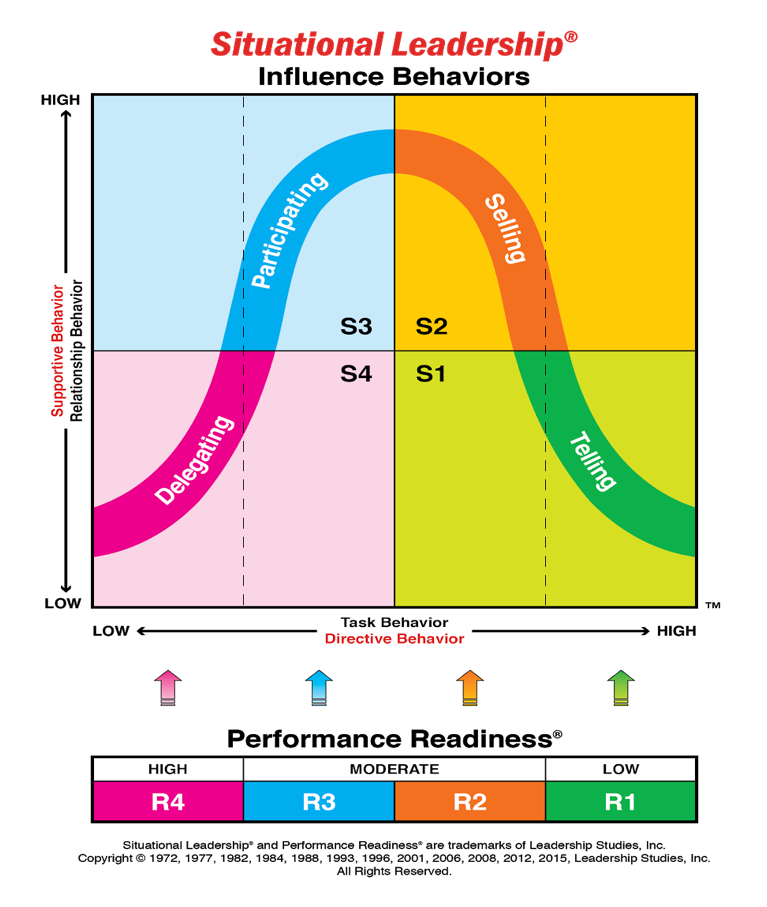
The SLII® model offered by The Ken Blanchard Companies (and by us at LEADx) looks like this:
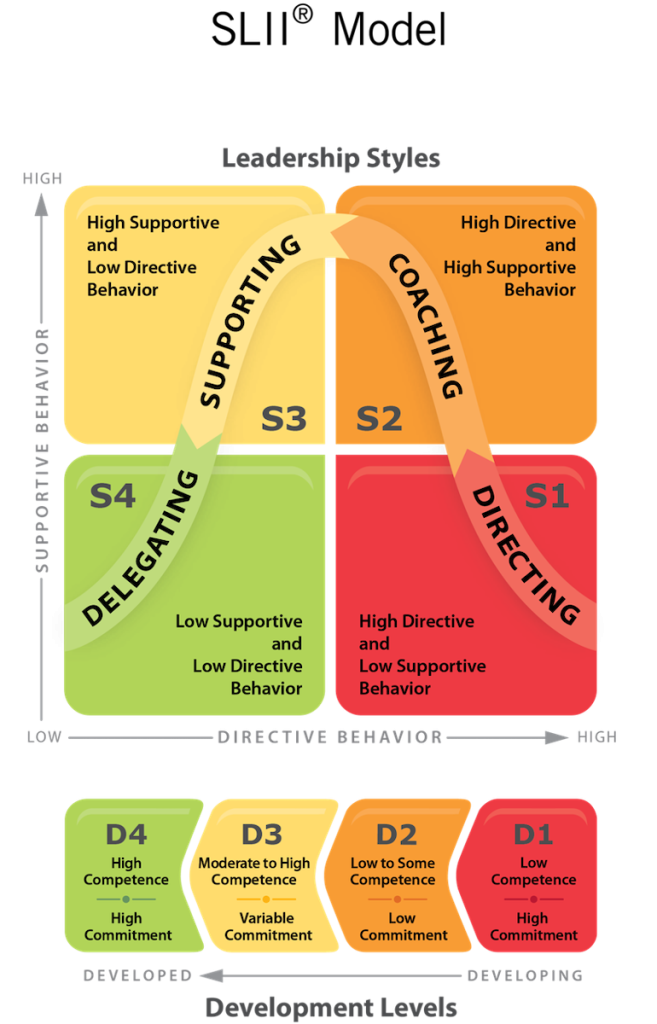
The original model labels the four quadrants of leadership: Telling, Selling, Participating, Delegating.
The revised Blanchard model labels them: Directing, Coaching, Supporting, Delegating.
SLII® Explained
To further explain situational leadership theory, we’ll stick with the Blanchard SLII® framework, and reference the image directly above.
The situational leader follows three simple steps:
- Identify the specific goal; frame it as a SMART goal
- Diagnose the individual’s level of competence and commitment
- Apply the correct leadership style
To understand and define the “performance readiness” of the follower, you determine how competent they are and how committed they are. You can see in the image above that followers move from D1 to D4 classifications as they become fully developed.
- D1 the Enthusiastic Beginner (Low Competence and High Commitment) — This individual may be inexperienced or brand new to the task, but is eager to learn and confident
- D2 the Disillusioned Learner (Low Competence and Low Commitment) — This individual may have little to no experience or is inconsistent, and is also frustrated, discouraged or overwhelmed
- D3 the Capable but Cautious Performer (High Competence and Low Commitment) — This individual is experienced and skillful but lacks confidence and is overly critical or apathetic
- D4 the Self-Reliant Achiever (High Competence and High Commitment) — This individual is experienced and consistently produces quality work, and is also self-assured, self-reliant and may even inspire others
The SLII® model describes four basic levels of leadership based on a combination of directing and supporting:
- S1 Directing (High Directing and Low Supporting) — This leadership style plans, shows, tells, monitors and gives frequent feedback.
- S2 Coaching (High Directing and High Supporting) — This leadership style explains, redirects, encourages, and praises.
- S3 Supporting (Low Directing and High Supporting) — This leadership style asks questions, facilitates, listens, encourages, and collaborates.
- S4 Delegating (Low Directing and Low Supporting) — This leadership style empowers, provides resources, trusts, affirms and challenges.
You then match your leadership approach to their stage of development:
- For a D1 follower, use an S1 “Directing” style
- For a D2 follower, use an S2 “Coaching” style
- For a D3 follower, use an S3 “Supporting” style
- For a D4 follower, use an S4 “Delegating” style
A critical aspect of situational leadership is that you don’t make a single judgment about each employee. “Kevin is such a D1! I’ve got to direct everything…”
Rather it’s task-specific. A seasoned sales professional might be a D4 when it comes to sales calls, but a D1 when it comes to using the new CRM software system. As the leader, you’d delegate sales related items, but be highly directive when it comes to call planning, digital notes, and reporting.

Scholarly Research
Researchers continue to study situational leadership; notable published papers include:
- Situational Leadership After 25 Years: A Retrospective
- The Situational Leadership Theory: A Critical View
- A Test of the Situational Leadership Theory
- Situational Leadership Theory Revisited: A Test Of An Across-jobs Perspective
Pricing
The SLII® Experience Public Workshop at LEADx costs $1495/person ($400 less than industry standard). This includes the full virtual workshop, the participant kit and assessment, and 3 months of support from a human coach.
More Information
Visit The Ken Blanchard Companies website to learn more about SLII®.
Visit The Center for Leadership Studies to learn more about Situational Leadership®.





